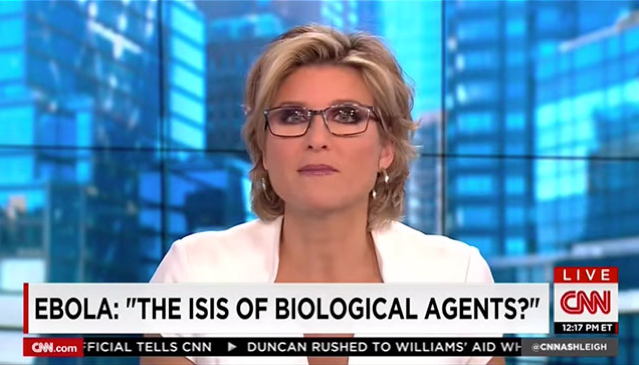Following the Trends in Ebola Money
Although Ebola is fading from public attention, it is very much on our minds here at CDP. We continue to undertake research, speak to NGO leaders and provide new material on our web site. We also have an important webinar scheduled for December 3. As in any disaster, we are thinking long-term about the humanitarian […]

Although Ebola is fading from public attention, it is very much on our minds here at CDP. We continue to undertake research, speak to NGO leaders and provide new material on our web site. We also have an important webinar scheduled for December 3. As in any disaster, we are thinking long-term about the humanitarian needs of vulnerable populations as well as the negative effects the pandemic is having on the health, educational, agricultural, and economic systems. This is a situation that will require our philanthropic attention for a long time to come.
What do we make of Ebola and philanthropy?
For us here at the Center for Disaster Philanthropy the issue began with an interview with National Public Radio. It was a good story and was well researched. The theme was that the public wasn’t donating very much to Ebola-related activities. I said that was in part due to the fact that Ebola isn’t an “event” – like Sandy or Katrina or even last year’s Cyclone Haiyan. It’s slowly evolving and complicated. Over the next month or so, CDP staff fielded another half dozen or so media inquiries, all on some variation of “lack of donor interest” – even from such unlikely sources as television reporters from Bogata, Columbia, and a Chinese business channel. You can read all of them HERE.
As the story evolved, our perspective evolved as well.
First, some parts of philanthropy DID respond. And in a big way – with nearly $350 million contributed so far. The Paul G. Allen Foundation has now donated over $100 million dollars and is devising ways to encourage more giving. The Bill and Melinda Gates donated $50 million. Facebook CEO Mark Zuckerberg and his wife, Priscilla Chan, gave $25 million. This week, Google announced that its CEO, Larry Page, and the company will donate $25 million to the efforts and the company will give at least $10 million in matching grants. American corporations have donated tens of millions of dollars in product and services.
Second, what is still missing from the money story in a major way are the contributions from average-sized foundations and individual donors. Here’s where we think the “slowly evolving” nature of Ebola enters in. The current Ebola situation is the result of a collapsing public health system, frequent outbreaks over the last decade, and lack of world attention to find a cure. Those are topics that usually aren’t the subject of most foundation and individual givers. As Michael Specter observed in a column last week, “our response to pandemics has become predictable: first, there is panic. Then we forget.” Donors have been slow to respond to other similar crises such as the Syrian refugee crisis and the drought in the Sahel. Both the Paul G. Allen Foundation and the matching grants from Google are trying to spur individual funder activity. The results of this effort will be carefully watched by the CDP team to see if they are successful.
Third, lets not forget the generous contributions of the American taxpayer to this crisis. When the outbreak became a world news item, President Obama declared it a threat to national security and announced he was sending 3,000 troops, including engineers and medical personnel, and building 17 treatment centers. Recently he asked Congress for an additional $6.18 billion in new emergency funds this fiscal year. The United States is one of the largest contributors among governments and multi-national organizations to the pandemic response effort.
Finally, we need to understand the role of the media. Media coverage fuels donations to disasters. Unlike a tornado or hurricane, the Ebola crisis is a challenging one for the media to cover. The stories are taking place thousands of miles away. Access to the affected sites is understandably difficult. It can at times be a dangerous environment for reporters and camera crews. Coverage has ebbed and flowed. Initially, it looked like media coverage might encourage more donations since Americans tend to pay more attention when they can make a direct connection to a story, such as a patient dying in a Dallas hospital or a New York doctor riding the subways. But coverage seemed to veer more towards heat than light after a while, causing hysteria that even spilled over into the recent elections. The Director of the Rutgers-Eagleton poll, which surveyed New Jersey residents on Ebola issues, observed, “the tone of the coverage seems to be increasing fear while not improving understanding,”

I’ll end my blog the same way I began. The Ebola crisis is far from over. We haven’t eradicated the disease, only slowed down its’ spread. At least three countries in West Africa are now in ruins, with their public health systems not functioning and economies in tatters. The epidemic is leaving many orphans, disrupting schooling, and causing enormous humanitarian challenges that will require government support and philanthropic attention for years to come. A New Yorker cartoon neatly summed up one potential response to this catastrophe. It shows a couple watching TV. One turns to the other and says “they haven’t said a thing about Ebola all week – the epidemic must be over.”
I’m hoping the American philanthropic community rises to the occasion and recognizes that responding to a disaster doesn’t end once the newscast is over.
